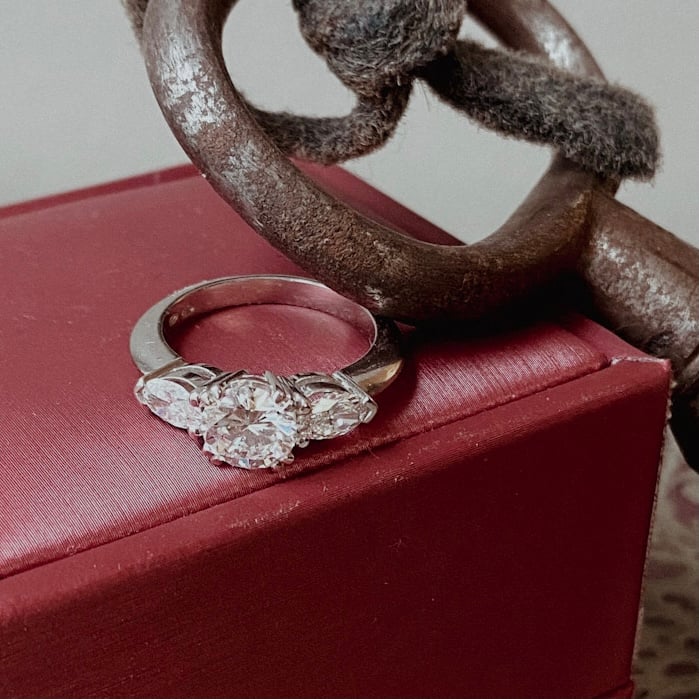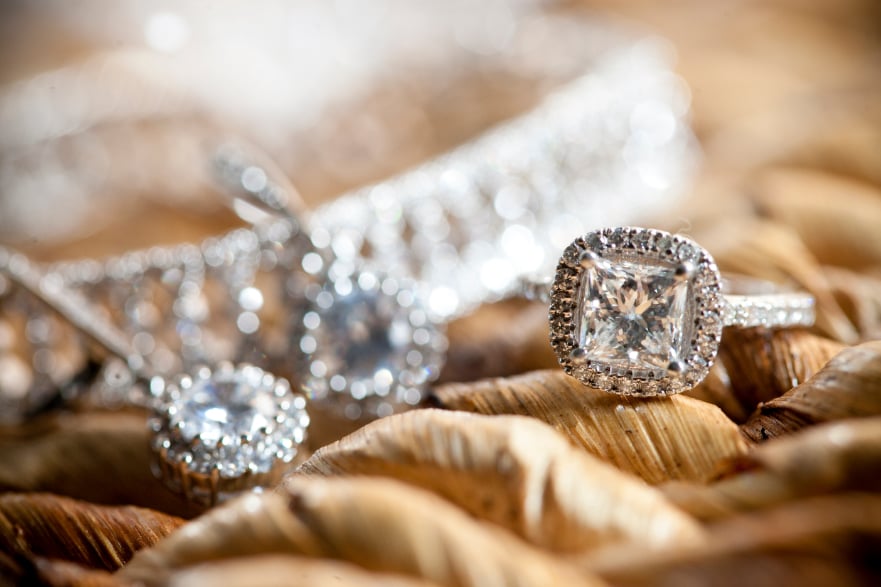
Determining the value and quality of a diamond
Determining the value of a diamond
The value of a diamond is determined in accordance with 4C. 4C is an abbreviation of four English words:
- Diamond weight (Carat),
- Color of the diamond,
- The clarity of the diamond and
- Diamond grinding (cut).
All diamonds are evaluated according to these four criteria.
Diamond
Diamond, in Greek ”Adamas” means “invincible”. This refers to the hardness of the diamond. Diamond is the third hardest substance in the world. The diamond is believed to tell of eternal, enduring love for everything. It is a traditional choice especially for an engagement ring as well as a wedding ring.
The history of the diamond goes back a few thousand years. Interestingly, however, the diamond has not been the first gemstone that ancient peoples wanted to use in their jewelry. Ruby, emerald, and sapphire, for example, have a remarkably far-reaching history.
Current diamond knowledge is thought to have landed in the West only around the 1650s, when a French naturalist Jean-Babtiste Tavernier brought diamonds from his travels to the East.

Weigth (carat)
Weight plays a major role in determining the value and price of a diamond. The price goes up as the weight increases. Larger diamonds are rarer than small ones. Therefore, one one-carat diamond is always more valuable than two half-carat diamonds. The price increase is sharpest for rarer, ie colorless and clean diamonds.
Color
A diamond is thought to be a colorless gemstone. In reality, only a tiny fraction of all diamonds in the world really are colorless. The color of a diamond is challenging to assess visually. The color of a diamond is affected by many things, the purity of the stone surface, the lighting, the color of the planting, and the colors reflected in the environment. Therefore, in order to make a diamond have a completely reliable color classification, the lighting conditions must be optimal. The differences in the color tones of a diamond are so small and subtle that the definition is aided by “reference stones” that represent all the different shades of color in the diamond.
Clarity
The diamond often looks completely clear and flawless at first glance. However, a diamond almost always contains natural small irregularities. The general term for these aforementioned diamond irregularities is “inclusion”, the various manifestations of which are called clouds, dots, or lines. The term inclusion is in itself descriptive because the inclusion actually just blocks the optimal passage of light rays inside the diamond, affecting the brightness of the diamond.
Timantin hionta (cut)
With grinding, it is possible to emphasize the best aspects of a diamond and even make the diamond shine even slightly weaker in terms of color or purity. The most common is the so-called brilliant cut, and for a good reason, it is the brilliant cut that brings the diamond to its best brilliance. In a brilliant cut diamond, light can move optimally inside the diamond; the rays of light move properly inside the diamond and are reflected out of the top surface of the diamond.
The most important evaluation criterion for the end user of a diamond jewelry is what a diamond looks like when viewed. In a diamond, everything affects everything; grinding plays a significant role in the “fire” of a diamond or a diamond with visible inclusions (I) can be as beautiful to the eye as a cleaner (e.g. SI or VS) diamond if only the inclusions happens to be “hidden” from view.
Diamond jewelry maintenance and cleaning
Valuable jewelry should be cared for and cleaned regularly. The splendor of even the most amazing diamond will be dimmed if it is not cleaned. One of the subtleties of a diamond is that by cleaning it becomes like new, as it does not absorb impurities. “Diamonds are forever!” Diamond jewelry can be washed, for example, with a toothbrush and dishwashing detergent under warm water. The diamond ring is also very dishwasher safe. We at HOLMASTO recommend an annual review of diamond jewelry plantings.
HOLMASTO constantly buys all kinds of diamond jewelry
Welcome to our store on weekdays from 10 am to 5 pm and on Saturdays from 10 am to 3 pm to evaluate your gold and jewelry products.


